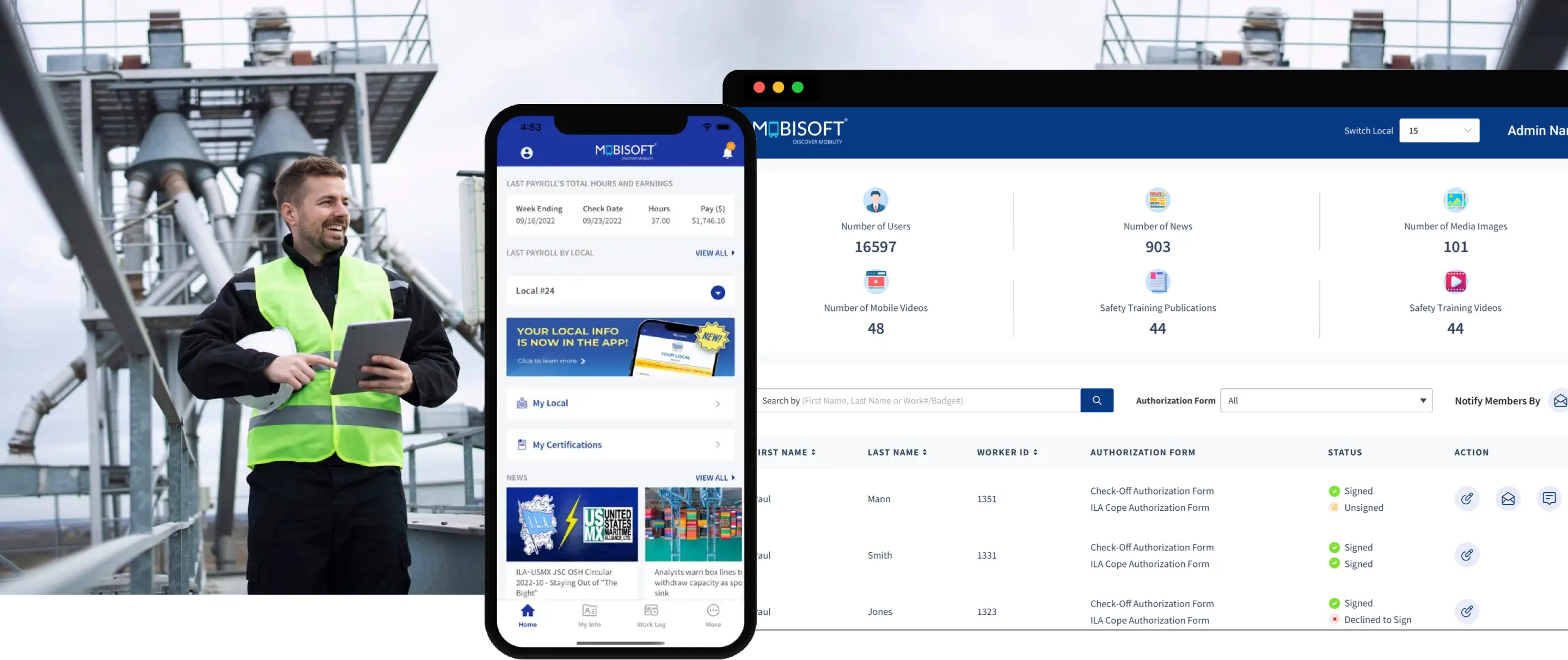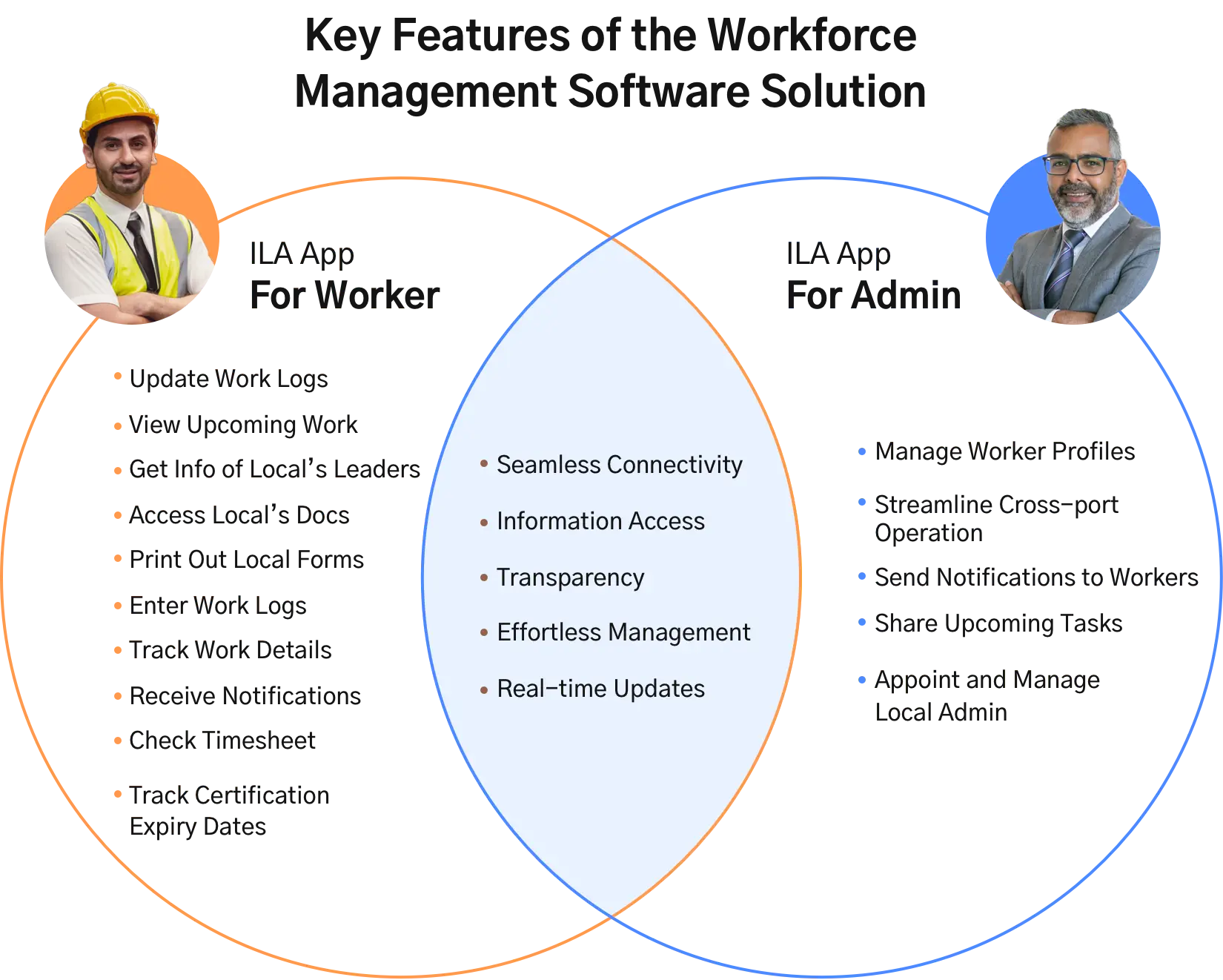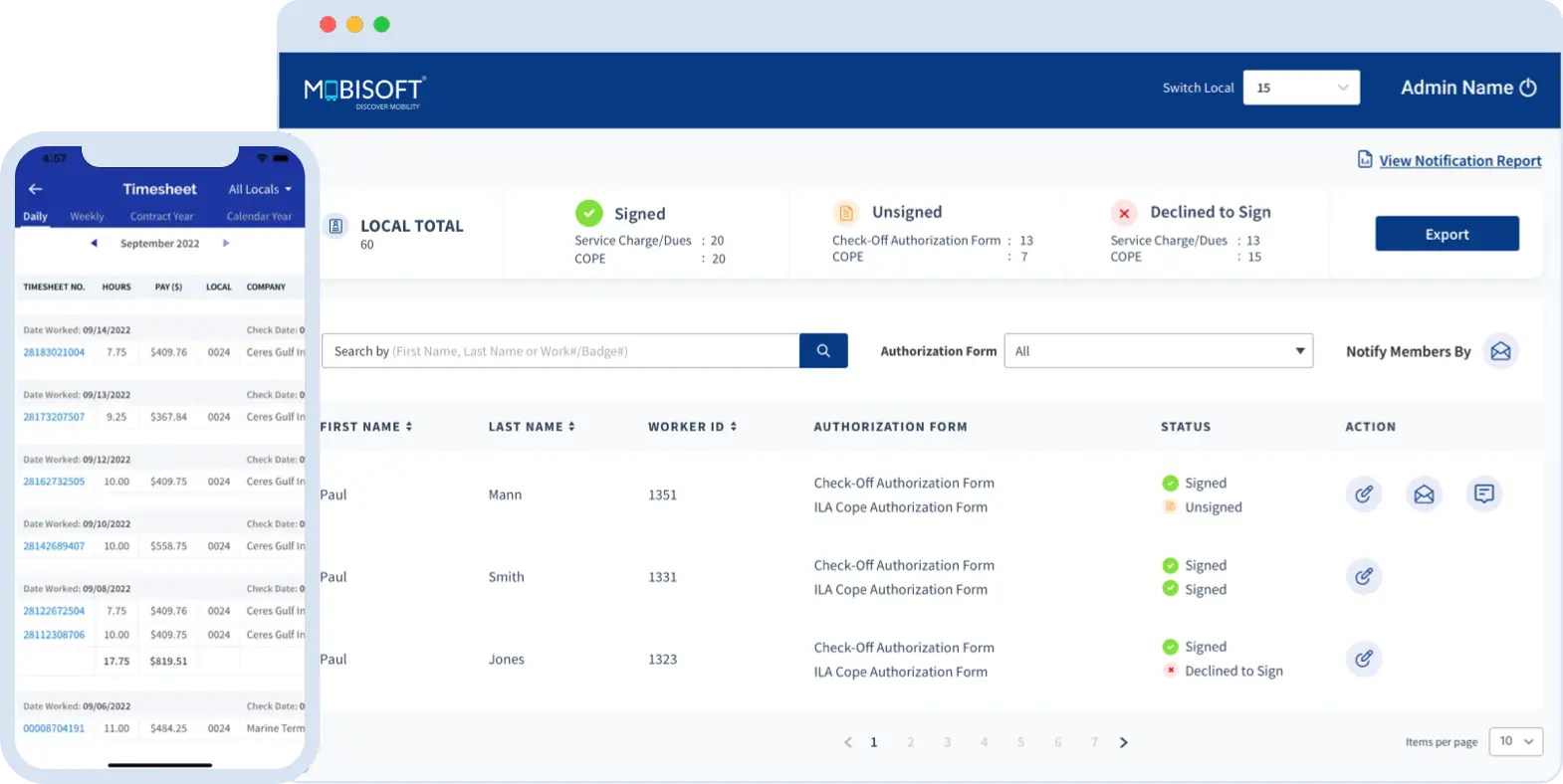The International Longshoremen's Association (ILA) is a well-known labor union representing longshore workers involved in various maritime activities in North America. There are 100 seaports and 200 local affiliates of the ILA located in multiple regions, including the Atlantic and Gulf Coasts, major U.S. rivers, Great Lakes, Puerto Rico, and Eastern Canada. This union is responsible for overseeing approximately 80,000 longshore workers, effectively contributing to the stability and functioning of the country's maritime industry.
As the ILA continued to expand its workforce across different seaports and local affiliates, the union faced multifaceted challenges in managing a large and geographically diverse workforce. These challenges necessitated the development of a digitized workforce management system to manage longshore worker processes, work logs, timesheets, payroll, and more while maintaining effective communication and coordination across all the ports. This case study presents how ILA approached these challenges by embracing digital transformation.
Key Challenges
The largest union of maritime workers in North America - ILA encountered a multitude of challenges with a growing membership base such as -
Lack of Real-time Tracking:
ILA struggled with managing a geographically diverse workforce, centralizing worker data such as daily work logs and upcoming tasks, and tracking members across different areas.
Timely Communication:
Inability to deliver timely communication to its members about their work schedules and union-related events, indicating potential communication gaps.
Inefficient Data Handling:
Difficulty in maintaining accurate records of work logs, Payout details, Timesheets, certifications, licenses, contact, and other information for thousands of longshoreman union workers, which was crucial for compliance and safety.
Limited Scalability and Inefficiency:
Growing membership strained administrative efficiency, demanding streamlined processes and improved territorial coordination for effective union management, which the ILA lacked.

The Workforce Management Solution
The union needed a centralized workforce management software solution to manage the ILA member information and track their maritime activities using unique ILA universal IDs while enabling real-time communication for timely updates on work assignments and events.
A comprehensive ILA Longshoremen’s Association App has been designed to easily access member information and resources, including industry news, safety publications, and local details. It keeps workers connected with updates from ILA leadership and their Local affiliates, facilitating cross-port communication, work scheduling, tracking, and managing payroll. The longshoreman application empowers both workers and union administrators, promoting efficient communication, information access, and overall union management.

Key Implementation
The following key implementations collectively create a robust and efficient ILA union application, enhancing user experience, scalability, security, and data analysis capabilities while ensuring regulatory compliance and accessibility.
Centralized Mobile-first System
To prioritize mobile accessibility and multiple device compatibility.
Scalability
Containerization and container orchestration to handle a growing membership.
Bulk Notifications
To deliver timely updates to users, keeping them informed in real time.
Scheduling and Management
To facilitate work assignments, industry updates, and event coordination.
Data Analytics
Real-time insights of workers, maritime tasks, and customizable reports.
Compliance & Security
To assure compliance with regional legal frameworks, labor laws, and union agreements.
Results
The improved workforce management process has proven to be highly effective for the International Longshoremen's Association. This centralized platform efficiently managed and coordinated the ever-expanding longshore workers' information such as work logs, worker certifications, and processes across local affiliates. It has also automated various administrative tasks, such as work logs, scheduling, tracking work hours, and managing payroll. As a result, it significantly reduced administrative burdens and increased operational efficiency while ensuring timely compensation, centralizing data, streamlining tasks, and enhancing the ILA's effectiveness in supporting longshore workers across North America.



